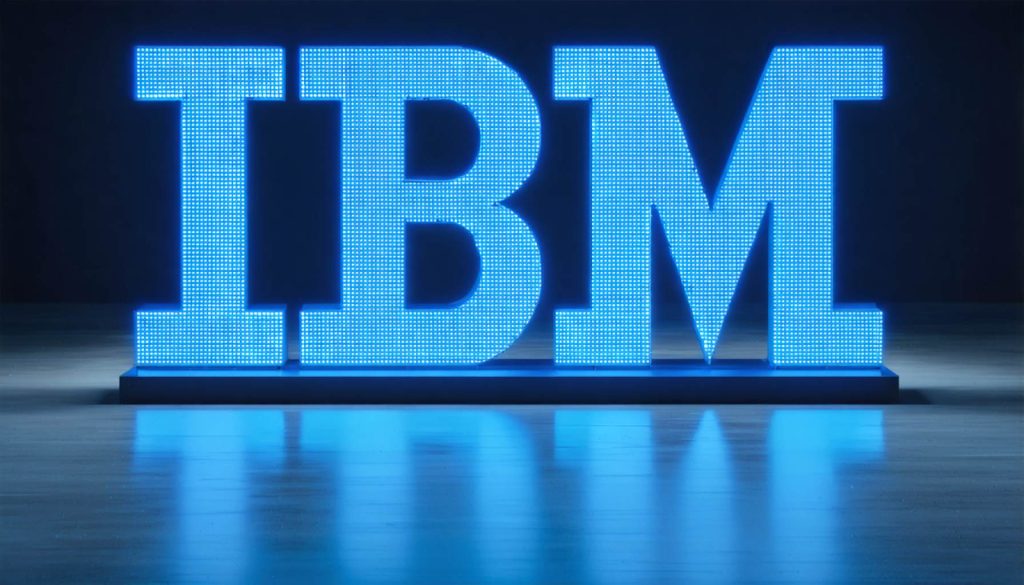
- IBM commits to a $150 billion investment in U.S. manufacturing over the next five years, focusing on quantum and mainframe computers.
- CEO Arvind Krishna leads IBM’s strategic plan to enhance American tech leadership and revitalize engineering prowess.
- The initiative aligns with a shift in U.S. trade policy under President Trump’s “reciprocal” tariff strategy, exempting crucial tech components.
- Nvidia complements IBM’s efforts by boosting domestic AI infrastructure with a $500 billion production plan.
- IBM’s investment underscores a dedication to innovation, ethical practices, and maintaining high-quality standards.
- This strategic move positions the U.S. as a global leader in technological advancement and inspires future innovators.
https://youtube.com/watch?v=leAIdKCZwf0
A gust of optimism sweeps through the halls of American innovation, as International Business Machines Corporation (IBM) pledges a colossal $150 billion investment over the next five years to bolster U.S. manufacturing and secure its leadership in cutting-edge technology. With quantum and mainframe computers as the pivotal stars of this initiative, IBM aims to rejuvenate the American tech economy and spark a new era of innovation.
Under the astute leadership of CEO Arvind Krishna, IBM’s commitment isn’t just about dollars; it’s a bold statement of intent to reinvigorate American engineering and technological prowess. Imagine sleek rows of quantum computers, humming with the ceaseless rhythm of progress, rising from manufacturing lines within America’s heartland. This vision seals IBM’s legacy as a pioneer of computation, dating back 114 years to its founding, with roots deeply embedded in American soil.
This announcement arrives on the heels of a significant policy shift when President Donald Trump recently introduced a “reciprocal” tariff paradigm aimed at energizing domestic production. Strategically, tech components such as chips, smartphones, and computers have been shielded from these tariffs, creating a conducive environment for investments like IBM’s to flourish.
Concurrently, Nvidia, another titan in the tech domain, charts a parallel course by advancing its U.S.-based production capabilities. Planning to produce up to $500 billion of AI infrastructure on domestic turf, Nvidia cements its status as a premier player in the AI evolution. The synergy between these two industry giants promises a rich tapestry of technological advancements poised to redefine the global landscape.
At the heart of this transformation lies America’s ambition: to reclaim its place as a beacon of technological leadership. IBM’s mission is more than an economic strategy; it’s a resounding endorsement of innovation grounded in expertise and experience. This move exemplifies a commitment to ethical practices and high-quality standards, aligning with principles that emphasize trustworthiness and deep, rooted knowledge.
The takeaway is clear: IBM’s monumental investment reflects a robust confidence in American ingenuity. By positioning the U.S. at the forefront of technological development, IBM not only fuels the economy but also inspires a new generation of innovators ready to harness the power of quantum leaps in human capability. As the future unfolds, the eyes of the world watch America once again become the crucible of technological magic.
IBM’s $150 Billion Investment: A New Era for U.S. Innovation and Technology
The Impact of IBM’s $150 Billion Pledge on U.S. Manufacturing
IBM’s recent announcement to invest $150 billion over the next five years marks a pivotal moment for the U.S. tech industry and manufacturing sector. As IBM focuses heavily on quantum computers and mainframe technology, let’s explore the broader implications, potential challenges, and future opportunities that arise from this ambitious plan.
How-To Steps & Life Hacks for Leveraging IBM’s Investment
1. For Tech Startups: Partner with IBM to gain access to the latest technologies in quantum computing, potentially opening doors for new product innovations.
2. For Professionals: Upskill in fields related to quantum computing and AI to increase employability in an industry poised for growth.
3. For Educational Institutions: Collaborate with IBM to develop curricula around emerging tech fields, preparing students for high-demand careers.
Real-World Use Cases
– Supply Chain Optimization: Quantum computing can significantly enhance the efficiency of supply chains by solving complex logistics problems faster.
– Healthcare Advancements: Quantum computing could revolutionize drug discovery and genomic research, enabling rapid simulations and data analysis.
– Financial Modeling: Predictive analytics powered by advanced tech can offer superior risk assessments and investment strategies.
Market Forecasts & Industry Trends
According to industry experts, the market for quantum computing is projected to grow exponentially, reaching over $2 billion by 2030. IBM’s investment is likely to catalyze this growth and could solidify the U.S. position as a leader in quantum technology development (IBM).
Reviews & Comparisons
IBM is not alone in betting on the U.S. as a tech hub. Companies like Google and Microsoft have also made significant investments in American technology, signaling a competitive landscape that promises rapid innovation. While IBM focuses on quantum and mainframe computers, Nvidia’s $500 billion investment in AI infrastructure demonstrates their commitment to advancing AI technologies.
Features, Specs & Pricing
IBM offers a robust suite of products in the quantum space, with the IBM Q System One serving as its flagship quantum computer. The system leverages integrated quantum processors and a sophisticated control infrastructure to provide unprecedented computational power.
Security & Sustainability
– Security: Quantum computing offers enhanced encryption techniques vital for secure communications and data protection.
– Sustainability: IBM’s commitment to eco-friendly practices in manufacturing aligns with global sustainability goals, reducing the carbon footprint of tech production.
Pros & Cons Overview
Pros:
– Pioneering leadership in quantum computing.
– Boost to U.S. manufacturing and job creation.
– Strengthened technological and economic posture globally.
Cons:
– High initial investment costs.
– Rapid tech evolution could outpace current infrastructure capabilities.
– Potential regulatory hurdles in adopting new tech.
Conclusion: Actionable Recommendations
For businesses and professionals alike, now is the time to engage with IBM’s vision. Tech enthusiasts should explore collaborations or career opportunities in quantum computing, while industries can leverage IBM’s innovations to bolster their operations.
By staying informed on the latest trends and advancements, stakeholders can position themselves at the forefront of this revolutionary transformation. For more information and updates, visit the official IBM website.
As the world watches, the U.S. stands ready to reclaim its role as a global tech leader, fueled by IBM’s strategic investments and its unwavering commitment to innovation and excellence.



